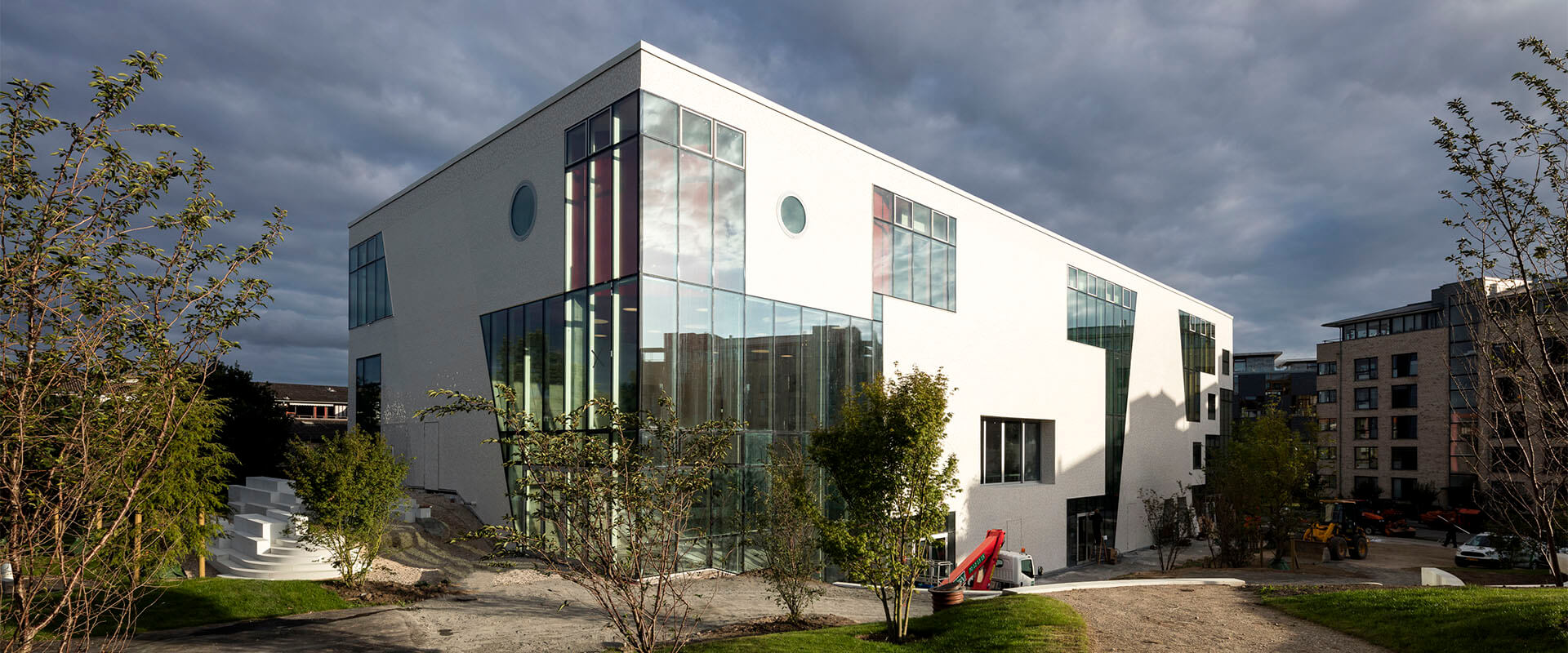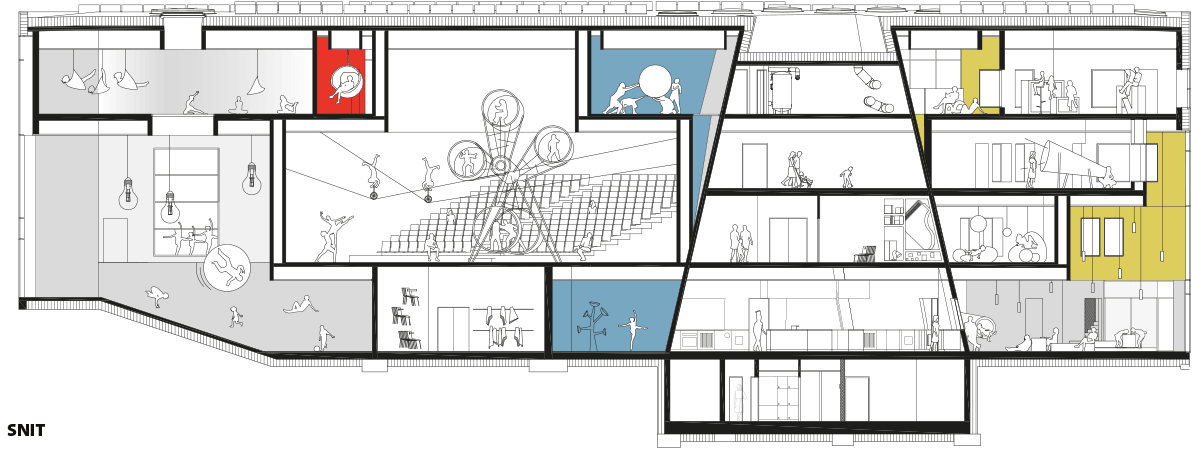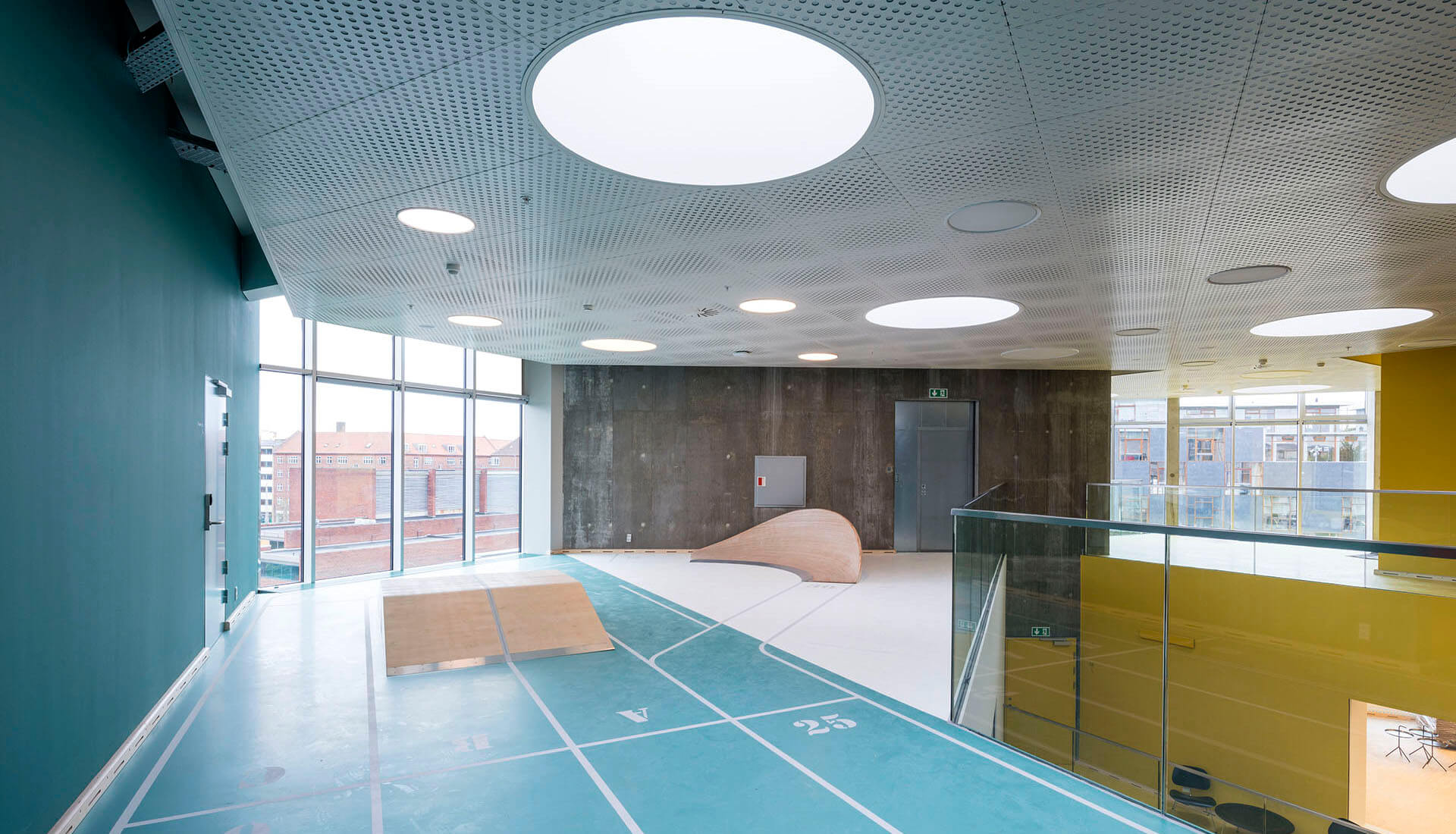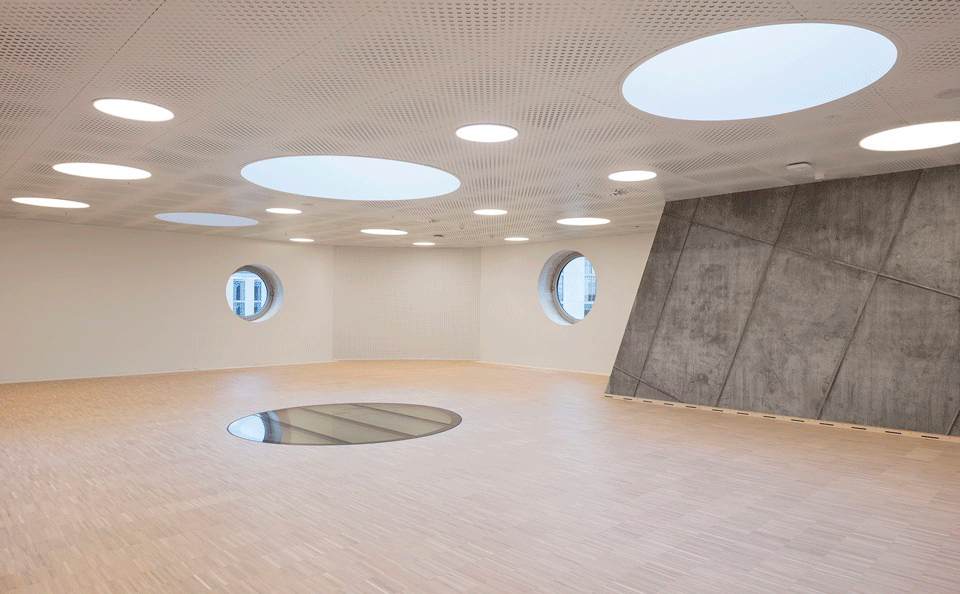
Come together!
KuBe House of Culture and Movement in Copenhagen
A new typology
The 3,200 m² Ku.Be House of Culture in Movement was designed for the municipality of Frederiksberg as a focal point for both the immediate community and also the wider area of Copenhagen; one that the people themselves could take ownership of and that would evolve its programme based on the specific wants and needs of its users. The project is a new typology, developed out of the response to a brief that solely asked for a building that would bring people together and improve the quality of life. In reply MVRDV and ADEPT answered with one that blends theatre, sport and learning into a space where body and mind are activated to promote a more healthy life for everyone, regardless of age, ability or interest; creating links between people that wouldn’t otherwise connect with each other.
Encourage the unexpected
The six primary volumes which make up Ku.Be, each with their own programme, are clad in a unique colour and material, clearly defining them within the building; from outside these shapes are hinted at in the fragmented tile façade. “We designed Ku.Be to encourage the unexpected,” explains MVRDV co-founder Jacob van Rijs. “Larger volumes are suited to hold performances or public meetings, smaller ones can be for exhibitions or debates. The fast-pace rooms are perfect for dance, or parkour; and zen rooms give you the contrast of yoga or meditation. It’s between these volumes where the real fun will happen though; spaces where we hint at a use, but which will become entirely user-defined.”
Team
Winy Maas, Jacob van Rijs, Nathalie de Vries Fokke Moerel, Mette Rasmussen, Julius Kirchert, Klaas Hofman, Francisco Pomares, Armor Gutierrez Rivas, Buster Christensen, Attilio Ranieri, Chris Green, Kate van Heusen, Henryk Struski, Emanuela Gioffreda, Raymond van den Broek, Sanne van der Burgh, Karl Johan Nyquist, Maria Lopez, Kasper Albrektsen

Movement
The route through the building focuses on developing and encouraging alternate forms of movement. The Labyrinth gets people on their hands and knees climbing through a three dimensional network of cubes from the second to third floors; or alternatively they could take the Mousetrap, a vertical maze. A net which spans several floors throughout the building, lets users climb up from floor to floor – suspended over the voids – and slides and fireman poles offer a fast way to get back down. “In Ku.Be we tried to turn your average experience of a building on its head,” tells ADEPT co-founder Martin Krogh. “What would otherwise be a simple, mindless journey through the building turns into an exploration and discovery of movement. Here it’s you that defines the route, however you want: climbing, sliding, crawling … jumping.” To cater for all abilities and ages, both easier and more standard ways of moving around are provided but even then a visual connection is maintained throughout Ku.Be.
PHOTOGRAPHS
Urban gardens
The urban gardens outside form the connection between Ku.Be and the urban realm, playing an important role in expressing the eight volumes and the activities happening inside. The diverse landscape — a system of microclimates with changing sounds, lights and scents which blends seamlessly into a hill with integrated slides — reaches out into the gardens and ends in an amphitheatre outside.
By becoming an extension of the urban landscape of Frederiksberg and integrating the community to such an extent, the House of Culture and Movement looks to become an incubator for further development within the neighbourhood.
Address
Ku.Be Dirch Passers Allé 4 DK 2000 Frederiksberg
Aerial view
Thank you, Google!
Opening
2016







